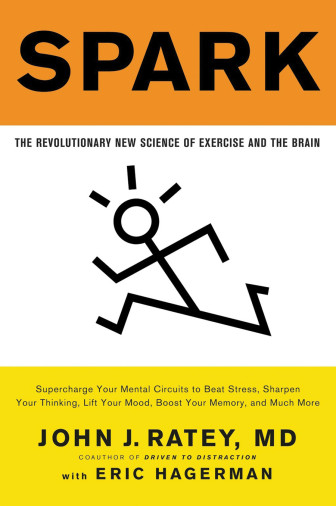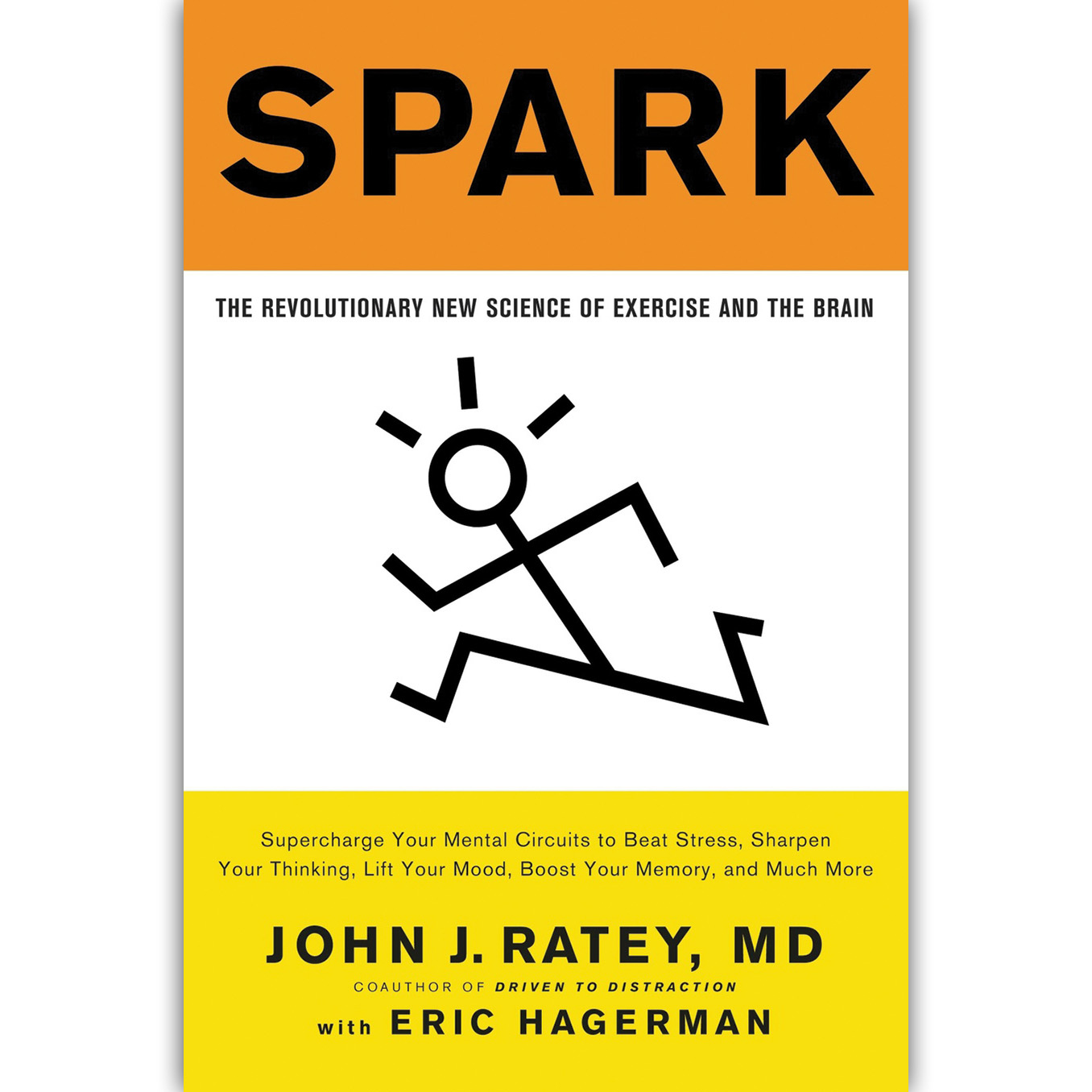 Spark: The Revolutionary New Science of Exercise and the Brain
Spark: The Revolutionary New Science of Exercise and the Brain
John J. Ratey, MD
Little, Brown and Company, 2008
292 pages
“We all know that exercise makes us feel better, but most of us have no idea why.”
As John J. Ratey thoroughly explains in “Spark: The Revolutionary New Science of Exercise and the Brain,” the why has to do with the enormous benefits of exercise to improve brain functioning that far outweigh the reasons most often cited: toned abs and a conditioned heart.
Ratey, an associate professor of psychiatry at Harvard Medical School and the author of numerous books on the brain and related topics such as attention deficit disorder and shadow depression — a very mild form of chronic depression — introduces readers to the science and research to understand that the most significant benefit of exercise is to create an environment “in which the brain is ready, willing, and able to learn.”
Ratey begins “Spark” by recounting the Naperville, Ill., school district’s successful efforts to raise students’ test scores by increasing their aerobic activity. As they moved more, their increased fitness translated into improved academics and increased executive functioning, such as improved planning and a greater capacity to reflect, evaluate and complete work on time. Zero Hour (named this because the fitness class is scheduled before first period) “turned the nineteen thousand students in Naperville District 203 into the fittest in the nation — and also some of the smartest.”
Researchers in the field of neuroscience (the study of science that deals with the structures of the nervous system and brain) have identified ways that exercise encourages the development and binding together of new nerve cells that is “the cellular basis of logging new information.” All this improves the brain’s alertness, attention and motivation. Ratey explains in layman’s terms why fit students’ brains show more electrical activity than their less fit peers. This electrical activity indicates that nerve endings are firing and communicating, and thinking occurs.
Material in this book can help youth workers identify inexpensive but effective ways to support learning. For instance, scientists know that during high-intensity exercise blood is shunted away from the prefrontal cortex, which makes it difficult to learn and hampers executive functioning to boot. Scientists found that while working out on the treadmill or the stationary bike for 20 minutes at a high intensity of 70 to 80 percent of their maximum heart rate, college students perform poorly on tests of complex learning. However, once exercise is completed, blood flows back to the prefrontal cortex, making post-exercise the ideal time to focus on a project that demands sharp thinking and complex analysis. So, the take-away is to encourage students to begin study sessions with brisk exercise. When students begin to think less clearly, or become fidgety, have them do more aerobic activity.
In writing “Spark,” Ratey’s conclusion that “exercise is the single most powerful tool you have to optimize your brain functions” is based on hundreds of research papers published in the past decade. He leads us to this conclusion, too, through the book’s 10 chapters. He begins “Spark” by describing the benefits of Naperville’s Zero Hour, and moves us along to consider how conditions such as stress, depression, attention deficit disorder and addiction harm the brain, and how exercise can lessen the impact of these conditions.
Ratey concludes “Spark” with suggested ways (all based on research) for becoming fit and improving the brain. He provides evidence of “the astounding impact of aerobic activity on the brain in the hope that if you understand what’s actually going on up there when you go for a run, you’ll develop a genuine motivation to lace up your sneakers every day.”
Additional resources about exercise and the brain:
- “Let’s Move: America’s Move to Raise a Healthier Generation of Kids” is an initiative begun by first lady Michelle Obama to combat childhood obesity. This site provides action steps to eat healthy and get active.
- The World Health Organization has established exercise guidelines for ages 5 to 17, 18 to 64, and 65 and above.
- “Teaching and Learning for a Sustainable Future” is a curriculum produced by UNESCO (United Nations Educational, Scientific, and Cultural Organization) for educating teachers to help students understand the challenges of health called


























